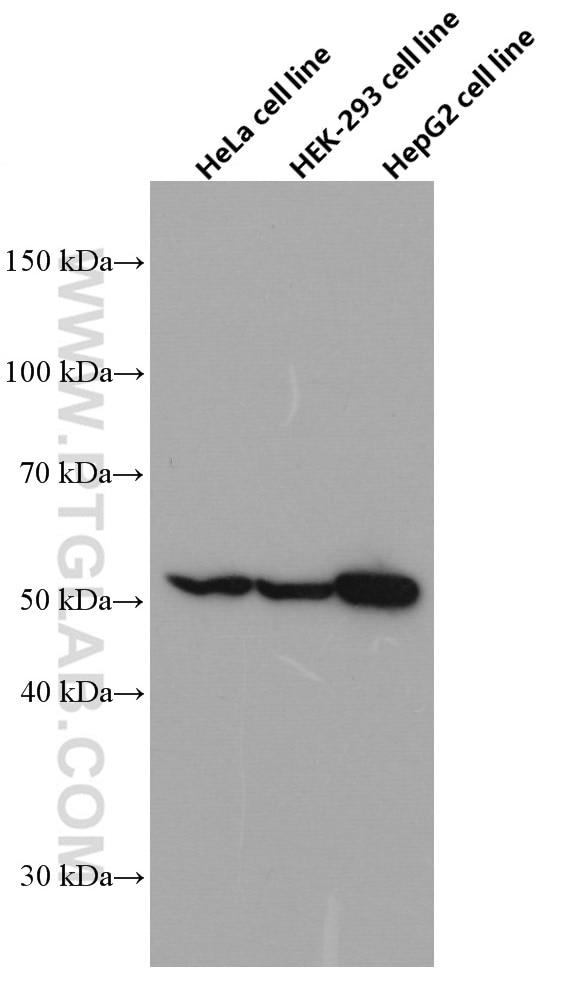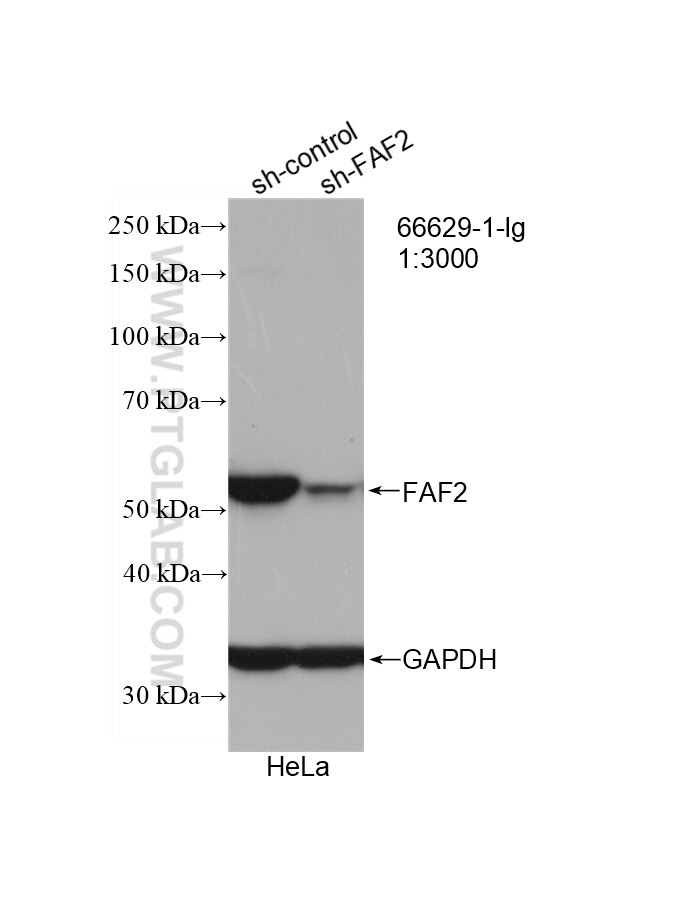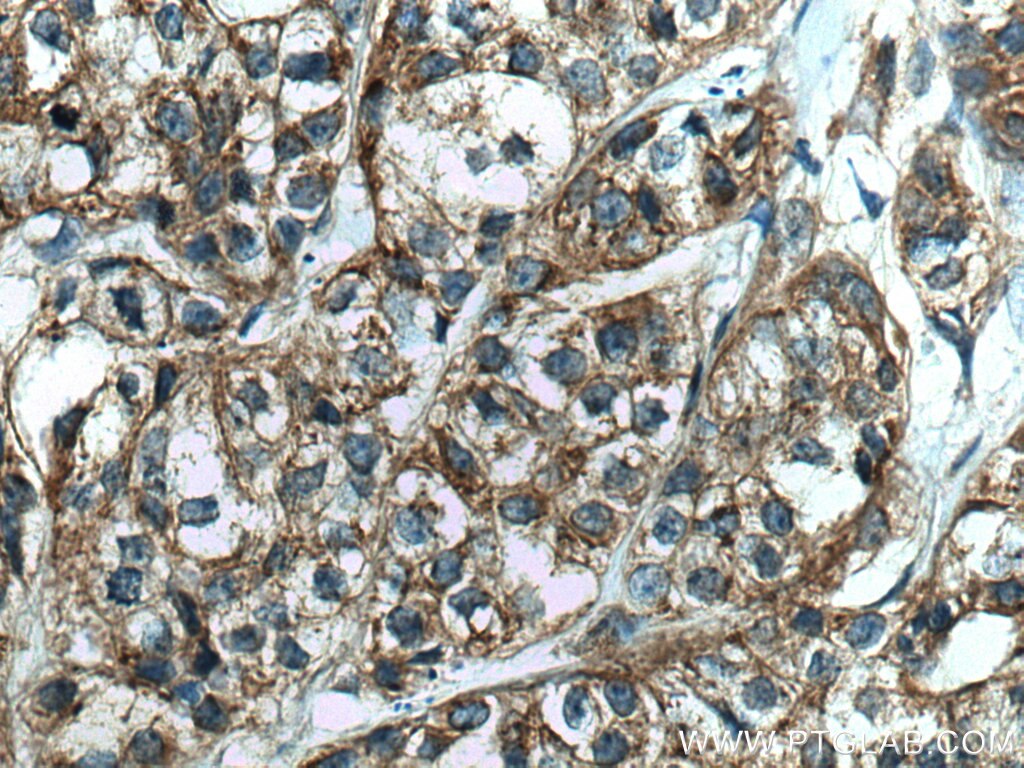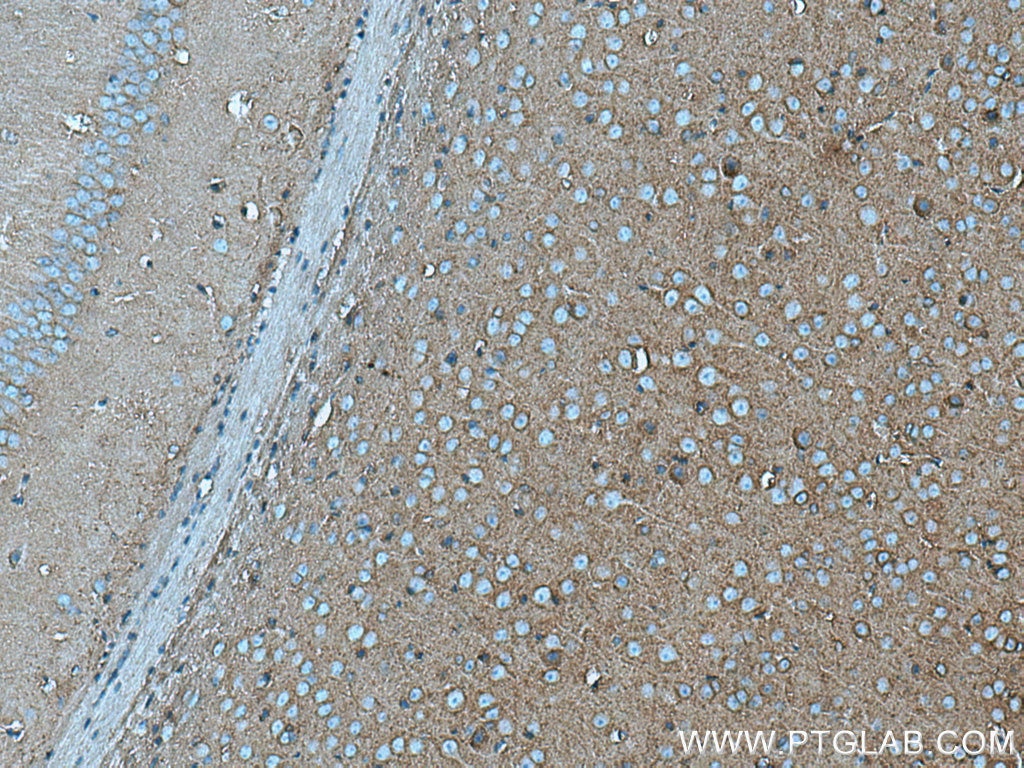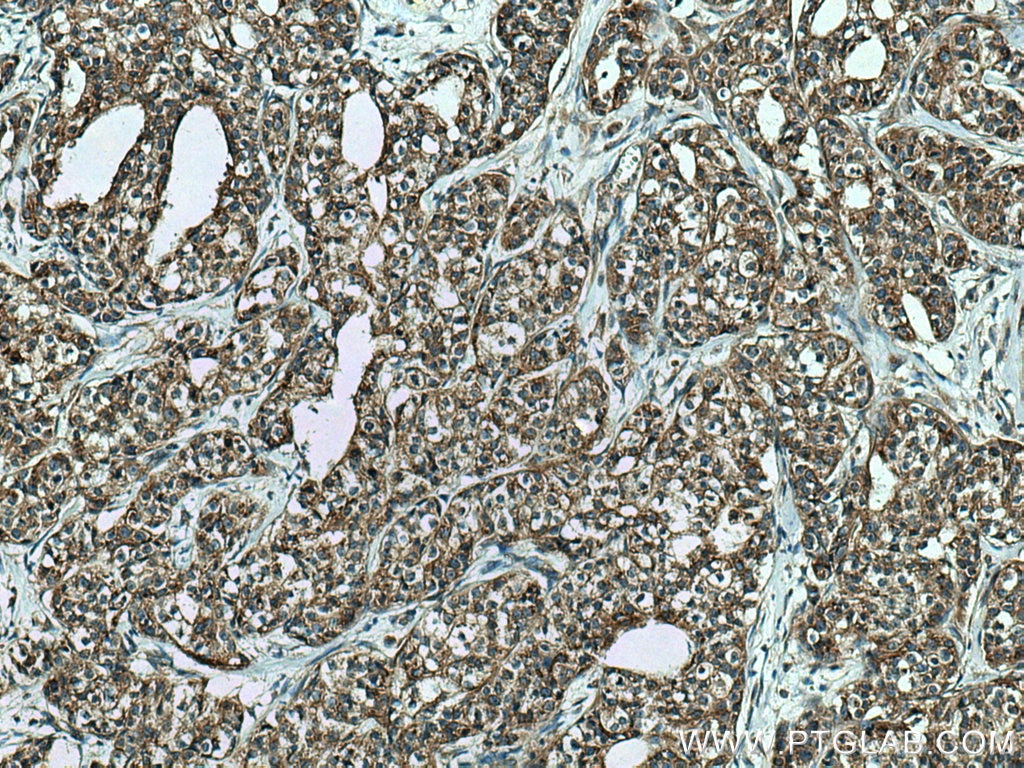- Featured Product
- KD/KO Validated
FAF2 Monoklonaler Antikörper
FAF2 Monoklonal Antikörper für WB, IHC, Indirect ELISA
Wirt / Isotyp
Maus / IgG1
Getestete Reaktivität
human, Maus
Anwendung
WB, IHC, Indirect ELISA
Konjugation
Unkonjugiert
CloneNo.
3H6D2
Kat-Nr. : 66629-1-PBS
Synonyme
Geprüfte Anwendungen
Produktinformation
66629-1-PBS bindet in WB, IHC, Indirect ELISA FAF2 und zeigt Reaktivität mit human, Maus
| Getestete Reaktivität | human, Maus |
| Wirt / Isotyp | Maus / IgG1 |
| Klonalität | Monoklonal |
| Typ | Antikörper |
| Immunogen | FAF2 fusion protein Ag21536 |
| Vollständiger Name | Fas associated factor family member 2 |
| Berechnetes Molekulargewicht | 445 aa, 53 kDa |
| Beobachtetes Molekulargewicht | 51 kDa |
| GenBank-Zugangsnummer | BC014001 |
| Gene symbol | FAF2 |
| Gene ID (NCBI) | 23197 |
| Konjugation | Unkonjugiert |
| Form | Liquid |
| Reinigungsmethode | Protein-G-Reinigung |
| Lagerungspuffer | PBS only |
| Lagerungsbedingungen | Store at -80°C. 20ul Größen enthalten 0,1% BSA. |
Hintergrundinformationen
Protein ETEA (FAF2, or UBXD8) is a homolog to Fas-associated factor 1 (FAF1), which is involved in Fas-mediated apoptosis. ETEA protein directly interacts with and negatively regulates neurofibromin. ETEA contains both UBA and UBX domains and overexpression of ETEA downregulates neurofibromin in human cells. It may play a role in the translocation of terminally misfolded proteins from the endoplasmic reticulum lumen to the cytoplasm and their degradation by the proteasome. ETEA is highly expressed in peripheral blood of patients with atopic dermatitis (AD) compared to normal individuals, and may regulate the resistance to apoptosis that is observed in T cells and eosinophils of AD patients.
